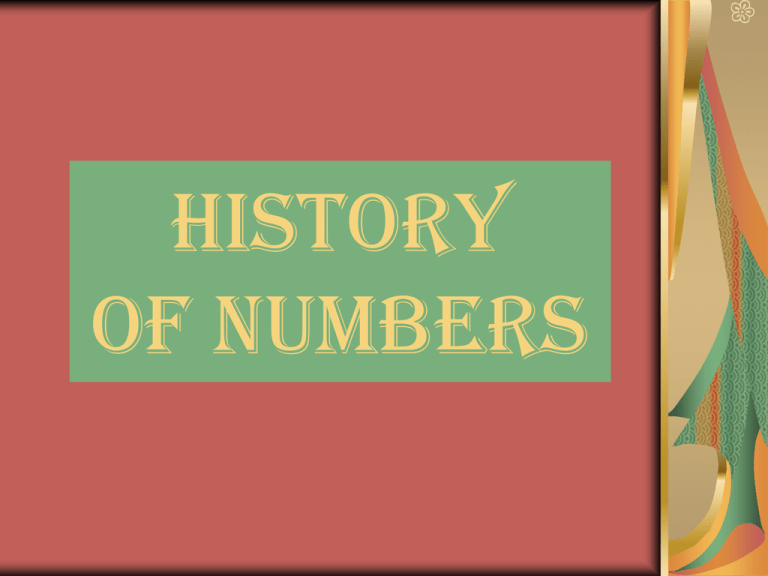History of Numbers PPT
advertisement

History of Numbers What Is A Number? What is a number? Are these numbers? Is 11 a number? 33? What about @xABFE? 35,000 BC Egyptian 3rd Century BC Additive Numeral Systems Some societies have an additive numeral system: a principle of addition, where each character has a value independent of its position in its representation Examples are the Greek and Roman numeral systems The Greek Numeral System Roman Numerals Drawbacks of positional numeral system Hard to represent larger numbers Hard to do arithmetic with larger numbers, trying do 23456 x 987654 South American Maths The Maya The Incas Mayan Maths twenties twenties units units 2 x 20 + 18 x 20 + 7 = 47 5 = 365 Babylonian Maths The Babylonians B a b y l o n I a n sixties units =64 3600s 60s 1s = 3604 Cultures that Conceived “Zero” Zero was conceived by these societies: Mesopotamia civilization 200 BC – 100 BC Maya civilization 300 – 1000 AD Indian sub-continent 400 BC – 400 AD Hindu-Arabic We have to thank the Indians for our modern number system. Similarity between the Indian numeral system and our modern one From the Indian sub-continent to Europe via the Arabs Indian Numbers Pythagoras’ Theorem 2 2 2 a = b + c 2 2 2 a = 1 + 1 a So a2 = 2 a=? 1 1 Square roots on the number line √1√4√9 -5 -4 -3 -2 -1 0 1 2 3 4 5 6 7 √2 Square roots of negatives Where should we put √-1 ? √-1=i √1√4√9 -5 -4 -3 -2 -1 0 1 2 3 4 5 6 7 √2 Imaginary Imaginary numbers 4i 3i 2i i √1√4√9 -5 -4 -3 -2 -1 0 1 2 3 4 5 6 7 √2 Real











